| |
STORIES, BOOKS & MEDIA

The majority of the following books are from the library of Chon Tri. Many of the summaries and in his own words. If you wish to purchase the book, click on the cover image and you will be linked to Amazon.com.
| Select a Category » |
[
Foundation
]
[
Practice
]
[
Sutra & Sastra
]
[
Koans
]
[
Works
]
[
History & References
]
[
Essays & Studies
]
[
Others
]
» Buy this book
» Recommend a Book
|
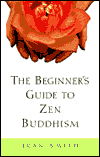
|
1. BEGINNER'S GUIDE TO ZEN BUDDHISM
by Jean Smith
Publisher: Crown Publishing Group (ISBN #: 0609804669, Paperback, 208 pp, February 1999)
» Submit a review
Summary
Here is a comprehensive introduction to Zen Buddhism for those who don't know how or where to begin, nor what to expect once they have started practicing. It includes the fundamentals of meditation practice (posture, technique, clothing), descriptions of the basic teachings and major texts, the teacher-student relationship, and what you will find when you visit a zendo, plus a history of Zen from the founding of Buddhism to its major schools in the West. In addition to answering the most frequently asked questions, it offers a listing of American Zen centers and resources, an annotated bibliography, and a glossary.
Jean Smith's enormously practical approach ensures that The Beginner's Guide to Zen Buddhism will become the book teachers and students alike will recommend.
|

|
2. BUDDHISM AND ZEN
by Nyogen Senzaki & Ruth Strout McCandless
Publisher: North Point Press (ISBN #: 0865473153, Paperback: 76 pages, December 1987)
» Submit a review
Summary
Book Description
Written for the neophyte who has no prior knowledge of the subject, Buddhism and Zen defines basic terms, translates key words, and answers the ten most frequently asked questions that are posed by Westerners interested in Zen Buddhism. Much of the Western world's interest in Zen is based on our growing awareness that the literal, the pragmatic, and the rational, while useful, often fail to explain the phenomena of the emotions, the unconscious, and the subconscious. Insights gleaned from psychoanalysis and various other forms of therapy have better prepared us for noncognitive enlightenment and paradox and non sequitur--it is no longer an unthinkable step from "The first shall be last and the last shall be first" to "The way that can be described is not the true way" and "What is the sound of one hand clapping?" The Buddha said, "If you try to see me through my form, or if you try to hear me through my voice, you will never reach me and will remain forever a stranger to my teaching."
This primer, first published in 1953 and long out of print, is a concise compendium of essential information for the seeker who wishes to explore Zen Buddhism.
|

|
3. BUDDHISM IN TRANSLATION
by Henry C. Warren (translator)
Publisher: South Asia Books (ISBN #: 8120803353, Hardcover, December 1995)
» Submit a review
Summary
The life of the Buddha, his teachings, and his monastic order from the substance of this work - Buddhism portrayed in the words of the Buddhists themselves and from the basic texts. The Pali passages, done into vigorous English and accurately rendered, were choosen to make a systematically complete presentation of the subject. The abiding importance and value of the work has become ever clearer in the years since its first publication in Harvard Oriental Series. (From the back cover of the book).
Basic introduction to key Pali writings. Background on the Buddha, doctrines, monastic order and secular life. pub. 1896, used widely as a text. Original documents, notes, and critical edition.
|

|
4. BUDDHISM WITHOUT BELIEFS: A CONTEMPORARY GUIDE TO AWAKENING
by Stephen Batchelor
Publisher: Riverhead Trade (ISBN #: 1573226564, Paperback, 127 pp, February 1998)
» Submit a review
Summary
This concise and beautiful book demystifies Buddhism by explaining, without jargon or obscure terminology, what awakening is and how to practice it. What Buddha taught, says Stephen Batchelor, is not something to believe in but something to do...something that can be practiced every day.
|
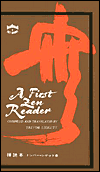
|
5. FIRST ZEN READER
by Trevor P. Leggett (compiler)
Publisher: Charles E. Tuttle Co., Inc. (ISBN #: 0804801800, Paperback, 236 pp, January 1991)
» Submit a review
Summary
From the Publisher
In the words of Trevor Leggett, the compiler: "The texts here translated will give a general idea of Zen theory and practice. They are not technical Buddhist works but are for the layman. The backbone of the book is two series of lectures by two famous contemporary masters: Takashina Rosen, the present primate of the Soto sect and president of the Japan Buddhist Association, and Amakuki Sessan, a well-known master of the Rinzai sect." The book thus presents the viewpoints of the two main surviving transmissions of Zen Buddhism. It might well have for its epigraph this sentence from Takashina's contribution: "What I am going to say about Zen is not an adaptation of formal lectures, but intended as a talk to people who wish to have a correct knowledge of Zen and to understand it."
|
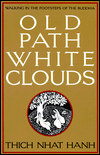
|
6. OLD PATH WHITE CLOUDS: WALKING IN THE FOOTSTEPS OF THE BUDDHA
by Thich Nhat Hanh
Publisher: Parallax Press (ISBN #: 0938077260, Paperback, 599 pp, November 1990)
» Submit a review
Summary
Simple and Beautiful.
Thich Nhat Hanh is a poet and a peacemaker. This book tells a story of love and compassion in a time of suffering and prejudice, showing the Buddha not as an unattainable concept or object of worship, but as a human being, as you and I. Just reading it evokes feelings of love and calm.
Nathaniel Ward (carbon_theater@lycos.com), A reviewer, November 28, 2000.
This is simply the best book on the life of Lord Buddha from the time he was still just a young prince, through his journey towards enlightenment. Very detailed outstanding book.
Josh (JDG4MCK@aol.com), 20 year old college student, April 4, 2000.
|
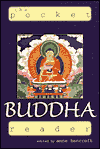
|
7. POCKET BUDDHA READER
by Anne Bancroft (editor)
Publisher: Shambhala (ISBN #: 1570627770, Pocket size - Softcover - 196 pp, January 2001)
» Submit a review
Summary
This is an excellent antholgy of the essential teachings of the Buddha edited and classified under different topics by Anne Bancroft. Reader can come back to it at any time to sip or drink the source.
|
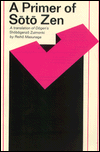
|
8. PRIMER OF SOTO ZEN: A TRANSLATION OF DOGEN'S SHOBOGENZO ZUIMONKI
by Zen master Dogen; Reiho Masunaga (translator)
Publisher: University of Hawaii Press (ISBN #: 0824803574, Paperback, 128 pp, March 1995)
» Submit a review
Summary
From the Publisher
The Shobogenzo Zuimonki consists largely of brief talks, hortatory remarks, and instructional and cautionary comments by the Soto Zen Master Dogen. Translated, shobogenzo means 'the eye of the true law.' Roughly translated zuimonki means 'easy for the ears to understand, ' or 'simplified.'
|
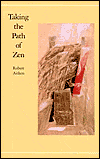
|
9. TAKING THE PATH OF ZEN
by Robert Aitken
Publisher: North Point Press (ISBN #: 0865470804, Paperback, 150 pp, October 1980)
» Submit a review
Summary
FROM THE PUBLISHER
There is a fine art to presenting complex ideas with simplicity and insight, in a manner that both guides and inspires. In Taking the Path of Zen Robert Aitken presents the practice, lifestyle, rationale, and ideology of Zen Buddhism with remarkable clarity. The foundation of Zen is the practice of zazen, or mediation, and Aitken Roshi insists that everything flows from the center. He discusses correct breathing, posture, routine, teacher-student relations, and koan study, as well as common problems and milestones encountered in the process. Throughout the book the author returns to zazen, offering further advice and more advanced techniques. The orientation extends to various religious attitudes and includes detailed discussions of the Three Treasures and the Ten Precepts of Zen Buddhism. Taking the Path of Zen will serve as orientation and guide for anyone who is drawn to the ways of Zen, from the simply curious to the serious Zen student.
|
The Language of Zen: Heart Speaking to Heart
by Richard Burnett Carter
|
10. THE LANGUAGE OF ZEN: HEART SPEAKING TO HEART
by Richard Burnett Carter
Publisher: Sterling Ethos (ISBN #: 1402747012, Hardcover, January 2010)
» Submit a review
Summary
"God," "Zazen," "Void," "Koan": We may think we understand these words. But what exactly do they mean in the world of Zen Buddhism? Westerners can have difficulty grasping the language in the way the original Zen writers intended. This lyrical inquiry examines the complexity of these terms, expanding your mind and opening it to the possibilities of Zen.
The first section provides brief explanations; the second part goes into greater depth, with some words repeated and others new. Why can we recognize the words “dharma†and “karma†and not Mahayana, the Greater Vehicle? In what way is the Buddha like a jumping frog?
Unlike entries in a dictionary, this lively conversation will animate your thoughts and stir your sleeping consciousness.
|
|
|

SUPPORT ZENGUIDE.COM

Purchase posters, art prints, media (music CD & DVD)
 MEDITATION
MEDITATION
by Olivier Follmi
→Puchase this Item
→More Art Prints & Media
→Zen & Buddhism books
|
|
|
s
.
t
.
o
.
r
.
i
.
e
.
s
.
,
.
.
b
.
o
.
o
.
k
.
s
.
.
&
.
.
m
.
e
.
d
.
i
.
a
.
|















 MEDITATION
MEDITATION








